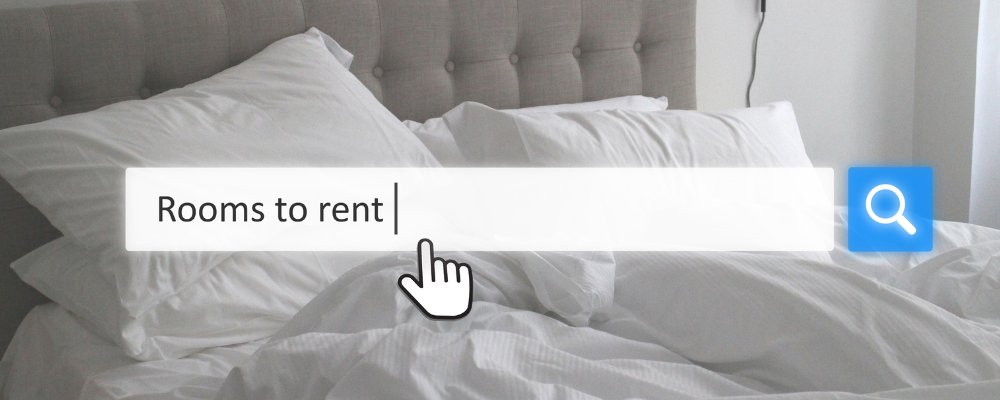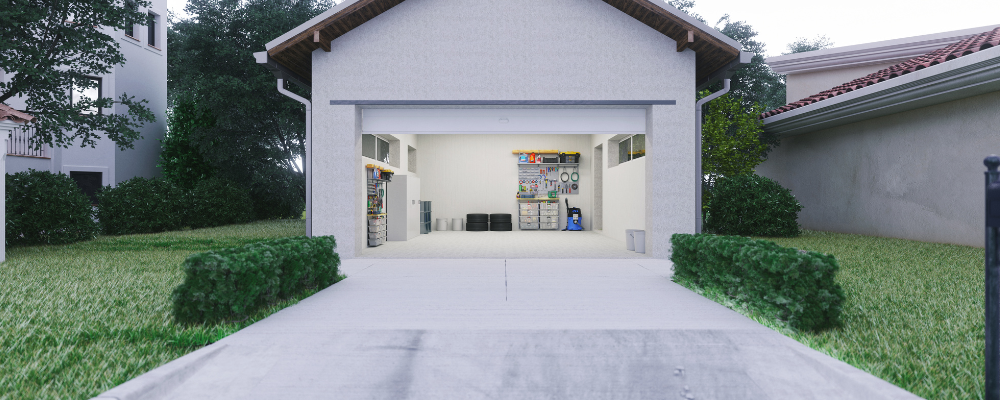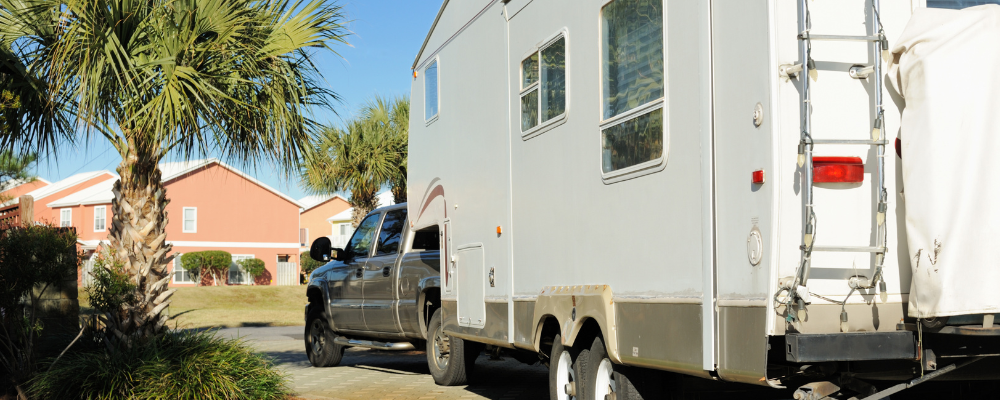Can You Actually Turn Your House Into A Source Of Income?
The good news for homeowners is that you can turn your primary residence into an extra income generator in a variety of ways. Whether it’s extra rooms, extra outdoor space or other drawcards that your home may have, there are several ways that you can make the most of out your home’s features, to make money.
These days, house hacking has become a popular concept in the real estate world and is an easy way for homeowners to use their space to generate an extra income. In uncertain economic times, making extra money from your real estate asset can be a great way to mitigate the uncertainty and give you and your family a little financial security.
Skip To
8 Ways To Make Money With Your House
From indoors to outdoors, there are a variety of ways you can tap into the income generating potential of your home. If you’re wondering how to make money with your house, here are some of the best ways to maximize your home’s features and, with a little time and effort, make a significant extra income.
Method 1: Rent Out A Room

Either short- or long-term room rentals can be a lucrative source of extra cash from your house in the form of rental income. Longer term roommate agreements would involve carefully selecting a tenant who will rent a room in your home, for a longer period of time, for example 6 or 12 months. Short-term rental agreements are also an option to consider, such as Airbnb, which can be a significant income generator.
Another avenue to consider is running a B&B from your home, where you can get several free rooms occupied nightly or weekly. Bear in mind that running a B&B takes a lot more effort than the other options, but it can be a good way to use multiple rooms in your home without having longer-term tenants.
Success Story
Dan and Marissa McDonald were in their mid-20’s, looking to buy their first home but they quite simply couldn’t afford it. During the Covid-19 pandemic was an even more difficult time to buy a house, and most people advised the couple against it. However, they went ahead with their plan and bought a duplex in Beverly, MA for $501,000.
To help them cover their mortgage payments, the couple decided to rent out the bottom half of their duplex $1,800 per month. This covered a large portion of their mortgage payments, which meant that they only had to pay $800 per month towards their mortgage. It also cut their living expenses down to half, and even allows them to save. Just 2 years after purchasing this duplex, Dan and Marissa had already saved enough to purchase another duplex in the same town and the couple has gone from strength to strength in their real estate investing journey.
Getting Started
1. Choose your strategy: If you’ve got a room or rooms to rent in your house, the first thing you should do is decide which path you’d like to choose for renting it out. You can either find a long-term tenant who will sign a 6 or 12 month lease to rent a room, or a portion of your home, or you can list the room/s on Airbnb for short-term rental, or you can run a B&B from your home to use the spare rooms.
2. Check your local regulations: Each area will have different zoning laws, and some areas will have particular rules around renting out rooms, which can include permits.
3. Prepare the room: Make sure that the room is adequately furnished and in good condition. It should also meet the basic safety requirements for your area. A clean and well-maintained room will attract the right kind of tenants.
4. Get the paperwork in order: Your next step is to determine a fair rental amount by researching the rent in your area based on room size and amenities. Establish clear house rules for your potential tenant. This can include guidelines on noise levels, shared spaces, overnight guests, and other expectations you have. Once this is done, you can create a rental agreement outlining the terms and conditions of the rental including rent amount, payment schedule and more.
5. Advertise the room: Your chosen room rental strategy will dictate where you advertise the room. You may use Airbnb, Facebook Marketplace or other platforms to find the applicable tenants.
6. Select tenants: One of the most important aspects of renting out room/s is securing the right kind of tenant. As such, tenants need to be thoroughly screened, including references, interviews and background checks, depending on your rental strategy. Once you’ve chosen tenants that are a good fit, you should finalize the lease details with them and make sure that they agree and sign. Next, you should collect a security deposit from longer term tenants, or make sure that the deposit is paid through the appropriate platform for short-term tenants.
Method 2: Rent Out Your Yard

If your home has a large yard, you can rent it out for various purposes such as for dog training or a private dog park for pet owners, the use of your swimming pool, and more. Sniffspot is a reputable platform to use for renting out your yard as a dog park, for example, where pet owners can bring their dogs to play safely. Swimply is a reliable platform used for renting out pools, which allows you to charge an hourly rate for the use of the swimming pool. These bits of income can provide a boost for property maintenance, insurance and other expenses.
Success Story
Leveraging his extensive backyard, Kyle Kazmer, a wealth partner at J.P. Morgan Advisors, ingeniously transformed it into a profitable dog-friendly haven using Sniffspot. With the platform providing a seamless solution for passive income, Kazmer has achieved remarkable success, earning over $40,000 since spring 2023, with monthly earnings peaking at an impressive $7,000 during the summer.
Getting Started
1. Check local regulations: Before you rent out your yard, make sure that your local authorities have no restrictions on renting outdoor spaces.
2. Get the yard ready: Once you’ve made sure that you can rent out your yard without any restrictions, it’s time to get it ready. This means ensuring that it is well-maintained, safe, and appealing. Depending on what you’re renting it out for, you may need to add amenities, such as seating areas.
3. Reach your target market: Determine who your target renter is and figure out where you can find them. This means finding the right platform, for the purpose which you intend to rent your yard out for.
4. Set guidelines: Create a set of yard rules, to give people a good idea of what they can and can’t do in your yard. Clearly communicate these rules to potential renters to ensure a smooth and respectful relationship.
5. Price your yard rental: Typically, a yard rental would be charged per hour. Do some research into yard rentals for the purpose you’ll be using it, and price your rental at a fair point. Along with this, it’s a good idea to figure out a convenient way for renters to book and pay, by using the platform that suits your strategy the best.
Method 3: Rent Out Parking Space

If your home has extra space in the driveway, consider creating extra parking spaces that are out of the way and not a hindrance for getting in and out of the property. You could rent these out to those looking for parking. If your home is near an airport, station or stadium where events are held, parking may be particularly sought-after. So, this can be a good option for those who have the space and the entrepreneurial spirit to rent out their driveway.
Success Story
Anthony Viola has a residence in Jamaica Plain, MA which features a driveway conveniently located within a 10-minute walk to the Forest Hills T station. Anthony doesn’t own a car so the parking spot associated with his home was unused. Anthony found an entrepreneurial solution to this in the form of the “Spacer” app, which connected him with a renter for the parking spot.
Currently, he leases the space to Boston commuters who prefer not to rely on public transportation for their daily commute. Anthony notes that the earnings from this arrangement equate to enough for a monthly load of groceries.
Getting Started
1. Clear out the parking space: Ensure that the parking space, or section of your driveway is clear of any debris and easily visible. It should be demarcated for parking, so that renters can easily see where they should go.
2. Check any bylaws: If you live on a property with an HOA (HomeOwners’ Association) or other association, make sure that the governing body’s bylaws do not prohibit renting out a parking space.
3. Choose the right platform: SpotHero is a good example of a platform that you can use to list parking spaces. People can book their spot in your driveway via platforms like this and pay either hourly or monthly.
4. Price your parking: Take a look around the platform you’ve chosen to figure out how to price your parking. Make sure to look in the same area, at places that are near similar amenities. Location, proximity to public transport and security can all play a part in setting your price point.
5. Provide clear information to renters: Clearly outline what your parking space rental includes, such as hours of availability, any security features, and the payment process. Be transparent about the terms and conditions to avoid misunderstandings.
6. Consider liability insurance: While this may not be necessary in some cases, liability insurance is an important consideration to protect yourself from any issues or damages that may occur as a result of the use of your parking space.
7. Maintain the parking: If you wish to keep attracting parking renters, you’ll need to maintain the parking space by keeping it clean and tidy. This means clearing out any foliage that may encroach on the parking, any debris that accumulates and so on.
Method 4: Create Storage Space

Homeowners who aren’t interested in being landlords, and renting out rooms or spaces to people can create storage space in their home and rent this out. This is a great way to convert spare space into a steady income. For example, converting your garage into a space that people can rent out for storage. This is a good way to make use of extra space inside or outside of your home and generate an income from it.
Success Story
Sarah rents out her garage as storage space for those who need extra space in the area. She uses Neighbor platform, which allows her to charge upwards of $75 for each 10’ x 20’ unit of space. Doing this allows Sarah to supplement her living expenses every month. She says her space is often used by people who are moving house and don’t want to pay the exorbitant rates of storage units while they move.
Getting Started
1. Ensure legal compliance: First things first, check your local regulations and make sure that you are compliant with any regulations surrounding renting of storage space.
2. Choose your platform: Platforms like Neighbor provide an easy way to rent out storage areas in your home to those who need it.
3. Create storage space: Assess the storage space options in your home and prepare them for being rented. Such as your attic, garage, shed or any other space. Clear the contents out and clean the space so that renters can simply bring their items and store them.
4. Define your target market: It’s important to determine which type of renters you will be targeting. That means looking at the length of storage time, size of items, security that may be required and so on.
5. Advertise your space: Select the platform that best suits your needs, take good photos of your storage space and advertise it on a platform. Put clear information on the advertisement for what you’re offering and how much it costs.
Method 5: Become An RV Host

For those who have a large, unused outdoor space with portions of their driveway available, renting this out to RV travelers is an easy way to make some extra money. It doesn’t require transforming an area and can be a hassle-free way to generate another income from your property.
Success Story
The Vanly platform enables homeowners to earn more than $1000 per month by sharing their property with campervan and RV travelers. This is for homeowners who can provide a driveway for the RVs to park, along with other amenities like water and Wi-Fi.
Getting Started
1. Check the rules: Check the local municipality’s licensing and registration requirements for hosting RVs in your yard. Each state has different regulations, and some may require a license. In addition to this, some HOA’s may not be willing to go along with the idea either.
2. Assess and prepare your space: Assess the space where you plan to host RVs. Ensure it is suitable for parking and accommodating recreational vehicles. Consider factors such as size, accessibility, and amenities available. Once you’ve done this, prepare the area for the RVs, this may involve installing outlets, hookups and more.
3. Decide on the amenities: Determine which services and amenities you’ll be providing, such as Wi-Fi access, water connections and waste disposal. This will impact the price you can charge for the RVs.
4. Pick a platform: Platforms like Vanly and RVwithme can be used for turning your unused space into a campground of sorts. Choose a platform that allows for transparent terms and conditions. Once you’ve chosen a platform, take a look at similar places to help you determine what you should charge RVs to settle at your property, and create your advertisement.
5. Create a hosting agreement: Make sure to create a comprehensive RV hosting agreement that outlines the terms and conditions of the arrangement. Include details such as the duration of stay, payment terms, and any specific rules or restrictions. Both you and the RV traveler should sign the agreement.
6. Set up a payment method: Select a secure and user-friendly payment method. Utilizing online payment platforms or secure electronic transfers can streamline the payment process, offering a documented record of transactions for both parties involved.
Method 6: Host Photo and Video Shoots

Having a residence in a renowned film hub such as Atlanta or Palm Springs presents a distinctive chance to lease your home as a movie set. It’s not necessary to own a lavish mansion, as numerous movies and TV shows showcase everyday American homes.
For those who are in smaller cities but have beautiful homes with a yard to suit it, commercial shoots and advertising agencies are often looking for places to shoot videos or take photos. Other opportunities include bridal shoots or other event photo or video shoots. If you’re interested in having your home featured on the big or small screen, establish connections with location agents, local film commissions, or explore platforms like Giggster.
Success Story
Ashley Torres and her husband have built a great revenue stream by allowing photo and commercial shoots in their home. They have typically used PeerSpace for most of their home hiring needs and have found success. Ashley has a significant online presence under her brand EveryDay Pursuits, and she uses this to leverage their home as a venue for shoots. Once they had submitted their home to various platforms (which took a total of 3 hours), they had their first booking in just 2 weeks.
Getting Started
1. Assess your space: Whether you’d like to rent the inside or outside of your home, it’s important to assess your space to determine whether you have backdrops that are attractive enough for photo or video shoots, or even filming. Along with this, make sure that your space features power outlets and other amenities that might be needed.
2. Consider the regulations: It’s a good idea to check whether there are any regulations or restrictions in your area for hosting commercial activities. You may need a permit to do this, particularly for commercial shoots.
3. Decide on a niche: Identify the type of photo and video shoots your space is best suited for. This could include portrait photography, product shoots, fashion shoots, or even video content creation. Understanding your niche will help you tailor your offering to potential clients.
4. Do price research: Research platforms to find similar photo or video shoot venues, this will help you determine the price point your property should be in. If your prices are competitive, this will make your property more attractive to photographers and videographers.
5. Create an online presence: Websites like Peerspace provide an easy way for homeowners to advertise their properties with high-quality photos and provide detailed information about it to attract photographers and videographers.
Method 7: Host Events

If you own a large space, you could host events like weddings and concerts at your property. While these may require a permit, it’s typically worth the money and effort as events like this can generate thousands of dollars in a day. You may even have an outdoor area like a barn that you can use for this, so that your yard or home aren’t used.
Success Story
John and Emily hosted small family gatherings and they soon realized that their home in Austin, TX had great potential. So, the couple made some impactful improvements to their home by purchasing furniture, creating cozy seating areas and adding a pergola to their backyard. From wedding ceremonies to corporate workshops, the couple managed to attract a variety of events based on their versatile property. They showcased their successes on social media and created an online presence that helped them build the reputation of their venue.
Getting Started
1. Explore your space: Evaluate the suitability of your home for various types of events. Consider the available indoor and outdoor space, amenities, and overall ambiance. It’s also a good idea to consider the maximum capacity your home can comfortably accommodate. You could host birthday parties, baby showers, small weddings, workshops, or any other gatherings.
2. Look into permits: Depending on the type of events you can host at your property they may require a permit. It’s a good idea to look into this ahead of time, to avoid being penalized or fined.
3. Set prices: Once you’ve figured out which events you plan on hosting at your property you can set the prices for each of these. You can charge per hour or per day, depending on the type of event. Do your research to make sure that you charge enough to make a profit, but not too much that you are putting potential renters off.
4. Create an agreement: Put together a detailed hosting agreement that contains all the necessary details of the arrangement. You should also come up with clear terms and conditions, even if you’re using a reputable platform. These should include details such as the duration of the rental, any restrictions on alcohol or loud music, and rules for the use of different areas in your home.
5. Find a platform: Look at the platform that best suits your needs, so that you are most likely to be successful with finding people to rent out your property.
Method 8: Grow Fresh Produce

If you have a property with a significant amount of land, you can look at growing fresh produce or flowers that you could sell. You could turn your garden into a market or supply local stores or markets with your goods. As more people become concerned with the organic nature of their food, this could become a bustling neighborhood business for some. While this requires a significant amount of effort, it allows homeowners to make use of their own produce.
Success Story
John Fonteyn and his wife Elizabeth Del Negro are proving that a small family farm can flourish by providing food to the neighborhood in California’s Ojai Valley. The couple deliver their produce to local families just a few hours after they have picked it. While not all gardens will turn into small farms, this success story is an inspiration for homeowners who want to make money from farming.
Getting Started
1. Evaluate your farming space: First things first, you’ll need to evaluate the space you have and whether it’s suitable for farming. You’ll need to consider factors like soil, sunlight, and accessibility.
2. Choose your crops: Research and select crops that are well-suited to your climate, soil, and available space. Consider high-demand and high-value crops, such as herbs, salad greens, tomatoes, and berries. Additionally, think about whether you want to grow organic produce, as this can be a selling point.
3. Select the best soil and compost: The trick to successful farming is nutrient-rich soil, and compost helps with making sure that the soil is healthy enough to sustain robust plant growth.
4. Set up your garden: Plan the layout of your garden, where you want to grow and what you want to grow. Take into account the needs of each crop and be consistent with watering and taking care of each crop or plant’s needs.
5. Harvest and market: Make sure to harvest your crops at the right time and market your produce to local farmers’ markets, community-supported agriculture (CSA) programs, or even set up a small roadside stand. Offer reasonable prices to attract more buyers and try to gain repeat business.
Final Tips For Making Money With Your House
There are a variety of methods to consider when you’re looking at how to make money with your house, some that require very little effort and some that require a little more. It’s important to choose a method that suits your interests the best and aligns with your resources and your local regulations.
Bear in mind that you may need to consider getting liability insurance, as this can come in useful particularly for hosting events. Presenting your property well is the key to making it more appealing for customers, this includes taking high-quality photos and maintaining cleanliness.
Don’t forget to ask for feedback from clients or customers regularly. You can use this information to make continuous improvements to your services, ensuring that you meet or exceed client expectations. Overall, using your primary residence to generate an extra income can be a great way to help you pay off your mortgage and even your property taxes.



